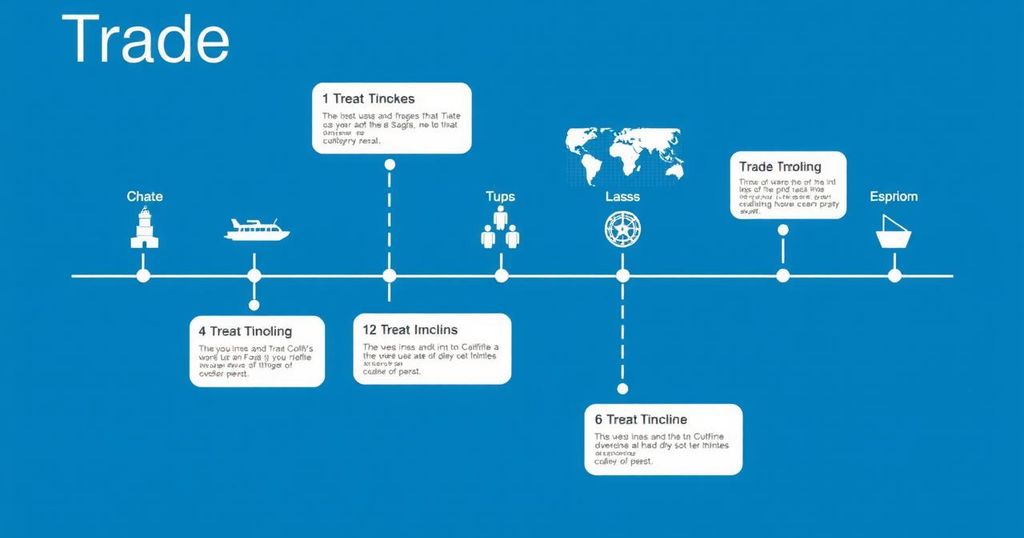President Trump’s renewed trade war has reintroduced significant tariffs on key trading partners including Mexico, Canada, and China, stemming from his earlier trade disputes. This timeline reveals escalating tensions through reciprocal tariffs and detailed responses from affected nations. Experts warn of potential economic impacts on businesses and consumers as uncertainties in the financial markets deepen.
In early 2023, President Donald Trump initiated another trade war, reviving a tense atmosphere surrounding the United States’ import policies with key trading partners: Mexico, Canada, and China. This escalation follows Trump’s historical precedent, having previously implemented tariffs during his first term vividly impacting global economies. Experts express concern over potential repercussions for businesses and consumers due to rising prices and market uncertainty resulting from the reinstated tariffs.
The timeline of events dates back to Trump’s first term, where he ignited a trade war with China through a series of retaliatory tariffs related to alleged unfair trade practices. U.S. tariffs on Chinese goods prompted Beijing to respond with levies on American products, marking a significant escalation. In addition, Trump introduced tariffs on solar panels, washing machines, and substantial import taxes on steel and aluminum, invoking national security rationale to bolster his stance against various trading partners.
Following Trump’s presidency, President Joe Biden retained many tariffs against China, asserting a more strategic approach. His administration imposed limits on semiconductor technologies and further elevated tariffs on various Chinese imports, including electric vehicles. Biden’s position reflects a continuation of aggressive trade tactics aimed at countering perceived economic threats from China, further complicating the trade landscape.
As of the 2024 presidential campaign season, Trump reiterated his intentions to significantly increase tariffs, proposing rates exceeding 60% on imports from China and 20% on various goods from other countries. His strategy aims to present a tough stance against international trade practices, although critics raise concerns regarding potential economic strain on American families and industries.
Upon his return to office in January 2025, Trump immediately announced plans for tariffs on imports from Mexico and Canada, prompting swift geopolitical responses and widespread backlash. The situation escalated when Trump expanded tariffs beyond these nations and threatened additional levies on other countries, framing it as a fairness measure under the proposed reciprocal tariffs.
Throughout February and March of 2025, Trump’s implementation of tariffs faced pushback from multiple countries, with retaliatory measures quickly following. Mexico and Canada began outlining their own responses while China countered with tariffs on key American agricultural exports, intensifying the adverse effects on the U.S. economy. Existing uncertainties led to fluctuating market conditions and mounting concerns among businesses about hiring and investment decisions due to the unpredictable trade environment.
In summary, President Trump’s renewed approach to tariffs has instigated another trade war characterized by aggressive import taxes affecting global markets and consumer prices. The history of trade disruptions began during his first term and has resurfaced with escalating tensions between the U.S. and its central trading partners. As both domestic and international spectrums react to these developments, the ramifications continue to evolve, leaving many uncertainties about future economic stability and cooperation.
Original Source: apnews.com




